Meet the Dutchman returning linseed paint manufacturing to Yorkshire for the first time in a century.
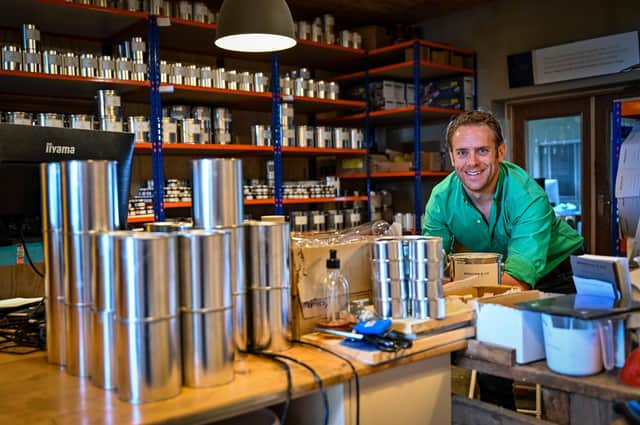

But down the track, and inside the warren of outhouses and workshops, Dutch building conservation expert Michiel Brouns is putting Yorkshire on the map as a manufacturer of linseed paint using centuries-old methods.
And as word spreads about the environmentally friendly process, orders are flooding in from across the globe including for many historical buildings.
Advertisement
Hide AdAdvertisement
Hide AdMichiel’s interest in linseed paint started in the late 1990s when he worked in building conservation near Maastricht, Holland.
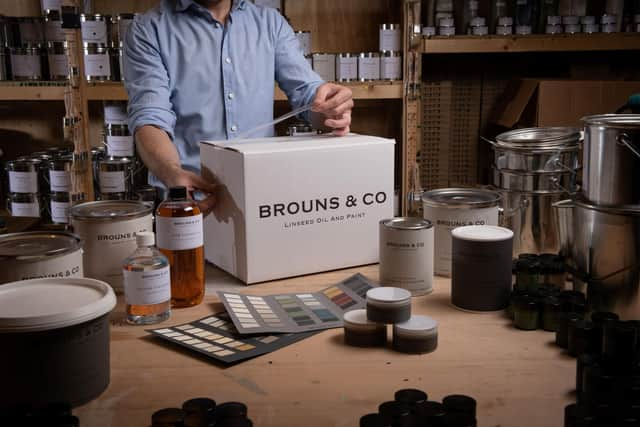

“I was involved with many historical properties, some of them hundreds of years old. Obviously with buildings such as these, conservation and restoration is paramount as no one wants to damage them,” he explains.
“Once I was with a group of architects and we were studying the window frames on an old building which were starting to rot. We knew what to do to repair them, but when someone asked about the best way of painting them, this got us all thinking. I knew about linseed paint and its incredible properties which can protect timber-built properties for hundreds of years and had seen how it had been usurped by modern plastic paint which isn’t only not as effective as linseed paint but has now also been identified as the largest source of microplastics in the seas.”
When Michiel relocated from his native Netherlands to Yorkshire in 2006, he launched Histoglass, a specialised thin double-glazing product ideal for historic properties, before diversifying into high quality natural paints.
Advertisement
Hide AdAdvertisement
Hide Ad"Linseed paint is an incredible product for wooden surfaces both outside and in,” he says. “We have this notion in the UK that the more coats of paint we put on timber, the better it is. Unfortunately, water always finds a way in, and when it does, it needs to find a way out again as well. The usual application of four or five coats of a petrochemical-based paint does the exact opposite of what it’s meant to do. It seals the water in and then the timber starts to rot.
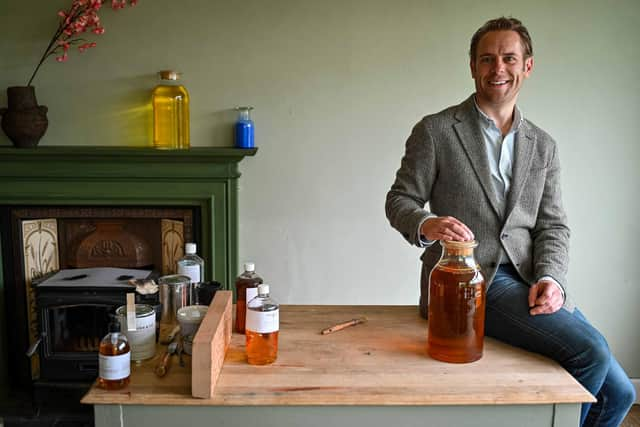

“Linseed paint is different because it doesn’t form a film on top of the timber and it allows water to escape again and even helps to preserve the wood. It’s also long-lasting - maintenance is just a wipe with some oil once every 10-15 years, so it’s actually cheaper than many brands of conventional paint.
“We now have two ranges of paint, one for exterior application and the other for interior. The exterior linseed paint range is available in a range of 40 historically accurate colours, and the interior range features contemporary as well as historic colours. These paints are complemented by a range of oils, materials and appliances that can all be used in the preparation and application of paint to protect and restore buildings, furniture, wood and metal, in an ecologically friendly way, as well as giving the surfaces maximum protection.”
So how is this new range of sustainable paints manufactured?
Advertisement
Hide AdAdvertisement
Hide AdThe process starts on a farm in Collingham - a few miles away from Michiel’s company base.
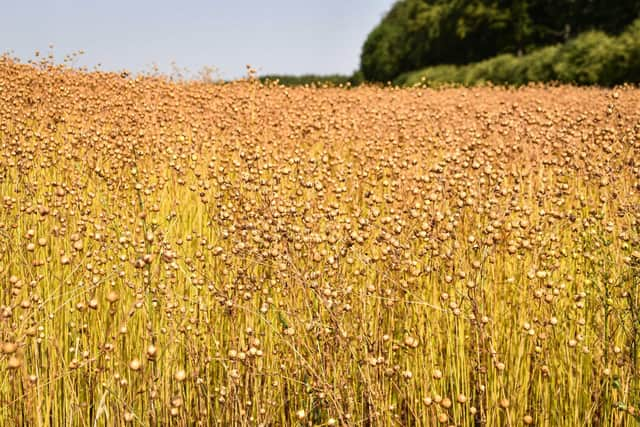

Here, crops of beautiful violet flax are eventually harvested before being crushed to source raw linseed oil which is then decanted into 1,000-litre drums and transported to the manufacturing centre where it’s boiled at 300 degrees Celsius for several hours to eliminate any impurities before being added to pigments to make the different paints colours.
Michiel explains: “To achieve the best results, we use column mixers and big barrels. The paint that’s mixed in these barrels is then transferred to a triple roller mill. Here, the paint, which has more of a paste consistency at this stage, will pass through the rollers between three and five times, depending on the grain size of the pigments used. This process creates a beautifully homogenous consistency, which forms the basis for the eventual paint colours.
“It’s important to note, however, that the mixture needs to stay close to room temperature. The friction of metal on metal generates considerable heat, and if the oil gets too hot it will get thinner, which makes it more difficult for the pigment to tack to.
Advertisement
Hide AdAdvertisement
Hide Ad“This means that the milling process must involve additional measures to keep the oil and paste at the right temperature. This is achieved by using rollers with a constant flow of cool water inside them.”


Brouns & Co's linseed paint is used in the UK by a raft of historic properties including Chatsworth House in Derbyshire and English Heritage-owned Brodsworth Hall near Doncaster, as well as by architects and developers. The business currently employs seven people at its Leeds headquarters and manufactures its exterior and interior linseed paint in a range of 40 historically accurate colours.
“The estate management (at Chatsworth) have always championed linseed paint for use on their estate as it not only prevents the timber from rotting, saving tons on labour and materials,” says Michiel.
“We were approached by Chatsworth Estate in 2014 to see if we could colour-match their eponymous estate blue. They’d previously had problems with the quality of the paint supplied by their existing supplier.
Advertisement
Hide AdAdvertisement
Hide Ad“The blue paint they were supplied lost its blue, and turned grey over time. We easily changed this to make sure that paint was made using the highest possible earth pigments and making sure cobalt blue was used instead of ultramarine (which bleaches with exposure to UV light). We also make sure that zinc white is always added to the paint in the factory, to get the best anti mould-growth properties.”
Malcolm Hulland, Buildings Contracts Manager at Chatsworth Estate, adds: "Brouns & Co linseed paint is tremendously easy to use and very cost effective. It reduces our maintenance cycle, application time in labour and cost in joinery repairs."
But it’s not just buildings in the UK that are benefitting from this environmentally friendly product. Over the last couple of years, the company has witnessed major growth in the US market. A series of landmark restoration projects have recently been completed using the manufacturer's linseed paint in New England, Virginia, North and South Carolina and Georgia.
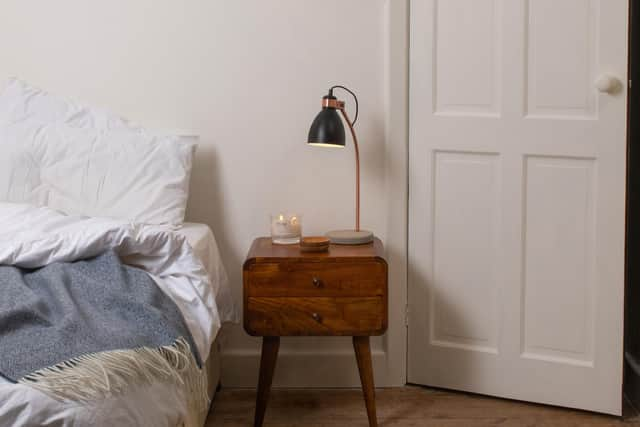

"Thanks to US architectural heritage, there are huge numbers of timber-build properties in the States and we've been focusing our efforts over there, particularly on the east coast, where the maintenance and preservation of historic wooden buildings is a major conservation priority. In Europe we assume the US doesn’t have old buildings, but the majority of the historic properties there, as in Britain, date from Georgian and Victorian times. The great thing is that these American historic buildings are young enough that with the right care and maintenance they can easily exist for hundreds more years.” Earlier this year, Michiel was commissioned to deliver a programme of continuing professional development (CPD) events with the US chapter of the Royal Institute of British Architects, RIBA-USA. In the first transatlantic collaboration of its kind, he delivered the CPD workshops for architects in the US on how linseed paint can benefit US projects.
Advertisement
Hide AdAdvertisement
Hide AdMichiel is confident about the ongoing appeal of linseed paint. “There’s absolutely no doubt at all that natural linseed paint is undergoing a renaissance thanks to its sustainability, durability, natural ingredients and hypoallergenic properties.”
www.linseedpaint.com.